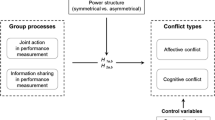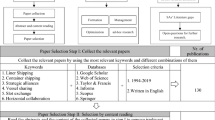Abstract
The liner shipping market is dominated by a few global carriers. The great majority of them have joined forces in strategic alliances while some others are opting to operate independently. This study aims to identify the effect on efficiency of participating in an alliance. The period 2010–2012 has been examined. The leading carriers are divided into two groups: independents and alliance members. We apply the metafrontier approach to further decompose the Malmquist productivity index. The results indicate that independent carriers outperformed alliance members in 2010; their independence was helpful in increasing space utilisation when demand was sufficient (in 2010). However, in the following 2 years, the opposite was true, indicating that alliance members had higher flexibility in terms of adjusting surplus capacity by cooperating with other carriers when the imbalance between supply and demand was serious (in the period from 2011 to 2012). The difference in efficiency between the two groups was shown to be statistically significant. These results support the recent trend towards stronger strategic alliances, from the perspective of higher efficiency.

Source Oh and Lee (2010)
Similar content being viewed by others
References
Bang, H.S., H.W. Kang, and J. Martin. 2012. The impact of operational and strategic management on liner shipping efficiency: A two-stage DEA approach. Maritime Policy and Management 39 (7): 653–672.
Banker, R.D., A. Charnes, and W.W. Cooper. 1984. Some models for estimating technical and scale inefficiencies in data envelopment analysis. Management Science 30: 1078-1092.
Battese, G.E., and D.S.P. Rao. 2002. Technology gap, efficiency, and a Stochastic Metafrontier function. International Journal of Business and Economics 1 (2): 87–93.
Caves, D.W., L.R. Christensen, and W.E. Diewert. 1982. The economic theory of index numbers and the measurement of input, output, and productivity. Econometrica 50 (6): 1393–1414.
Charnes, A., W.W. Cooper, and E. Rhodes. 1978. Measuring the efficiency of decision making unit. European Journal of Operational Research 2: 429–444.
Dyson, R.G., R. Allen, A.S. Camanho, V.V. Podinovski, C.S. Sarrico, and E.A. Shale. 2001. Pitfalls and protocols in DEA. European Journal of Operational Research 132 (2): 245–259.
Färe, R., S. Grosskopf, M. Norris, and Z. Zhang. 1994. Productivity growth, technical progress, and efficiency change in industrialized countries. The American Economic Review 84 (1): 66–83.
Førsund, F.R. 1992. A comparison of parametric and non-parametric efficiency measures: The case of Norwegian ferries. The Journal of Productivity Analysis 3: 21–39.
Golany, B. and Roll, Y. 1989. An application procedure for DEA. OMEGA 17 (3): 237–250.
Gutiérrez, E., S. Lozano, and S. Furió. 2014. Evaluating efficiency of international container shipping lines: A bootstrap DEA approach. Maritime Economics & Logistics 16 (1): 55–71.
Hadinejad, M., R. Nazarian, and F. Piri. 2013. The measurement electronic services efficiency in public and private banks in IRAN: Using Data Envelopment Analysis method (DEA). Economics Journal 7 (23): 177–202.
Halkos, G., N.G. Tzeremes, and S.A. Kourtzidis. 2014. Weight assurance region in two-stage additive efficiency decomposition DEA model: An application to school data. Journal of the Operational Research Society 66: 696–704.
Hayami, Y. 1969. Sources of agricultural productivity gap among selected countries. American Journal Agricultural Economics 51 (3): 564–575.
Herrero, I. 2005. Different approaches to efficiency analysis. An application to the Spanish trawl fleet operating in Moroccan waters. European Journal of Operational Research 167 (1): 257–271.
Kuo, J.S., and K.T. Lo. 2015. The financial statement analysis of not-for-profit medical institutions in Taiwan: An application of the DEA approach. Journal of Management & Systems 22 (2): 205–228.
Li, K., and B. Lin. 2016. Impact of energy conservation policies on the green productivity in China’s manufacturing sector: Evidence from a three-stage DEA model. Applied Energy 168: 351–363.
Lin, W.C., C.F. Liu, and C.W. Chu. 2005. Performance efficiency evaluation of the Taiwan’s shipping industry: An application of Data Envelopment Analysis. Proceedings of the Eastern Asia Society for Transportation Studies 5: 467–476.
Lun, V.Y.H., and P. Marlow. 2011. The impact of capacity on firm performance: A study of the liner shipping industry. International Journal of Shipping and Transport Logistics 3 (1): 57–71.
Luna, D.E., J.R. Gil-Garcia, L.F. Luna-Reyes, R. Sandoval-Almazan, and A. Duarte-Valle. 2013. Improving the performance assessment of government web portals: A proposal using data envelopment analysis (DEA). Information Policy 18 (2): 169–187.
O’Donnell, O., et al. 2008. Who pays for health care in Asia? Journal of Health Economics 27 (2): 460–475.
Oh, D.H., and J.D. Lee. 2010. A Metafrontier approach for measuring Malmquist productivity index. Empirical Economics 38 (1): 47–64.
Panayides, P.M., N. Lambertides, and C.S. Savva. 2011. The relative efficiency of shipping companies. Transportation Research Part E 47 (5): 681–694.
Pastor, J.T., and C.A.K. Lovell. 2005. A global Malmquist productivity index. Economics Letters 88 (2): 266–271.
Piot-Lepetit, I., and J. Nzongang. 2014. Financial sustainability and poverty outreach within a network of village banks in Cameroon: A multi-DEA approach. European Journal of Operational Research 234 (1): 319–330.
Rao, D.S.P. 2006. Metafrontier frameworks for the study of firm-level efficiencies and technology gaps, presented at Conference on Productivity and Efficiency, March 10. Taipei, Taiwan.
Ruttan, V.W., H.P. Binswanger, Y. Hayami, et al. 1978. Induced innovation: Technology, institution, and developments. Baltimore: John Hopkins University Press.
Tulkens, H., and P.V. Eeckaut. 1995. Non-parametric efficiency, progress and regress measures for panel data: Methodological Aspects. European Journal of Operational Research 80: 474–499.
Wu, J., Q.Y. Zhu, J. Chu, H.W. Liu, and L. Liang. 2015. Measuring energy and environmental efficiency of transportation systems in China based on a parallel DEA approach. Transportation Research Part D: Transport and Environment 48: 460–472.
Acknowledgements
We would like to thank the Ministry of Science and Technology of the Republic of China, Taiwan, for supporting the authors in this research under Contract No. MOST-103-2410-H-019-025. In addition, the authors’ appreciation is extended to Professor Hercules Haralambides and the anonymous reviewers for their constructive suggestions for improving our manuscript.
Author information
Authors and Affiliations
Corresponding author
Rights and permissions
About this article
Cite this article
Chao, SL., Lai, CW. Comparing the efficiency of alliance members and independent liner carriers: a metafrontier analysis. Marit Econ Logist 21, 157–172 (2019). https://doi.org/10.1057/s41278-017-0088-2
Published:
Issue Date:
DOI: https://doi.org/10.1057/s41278-017-0088-2




